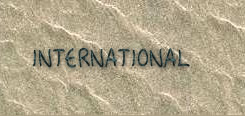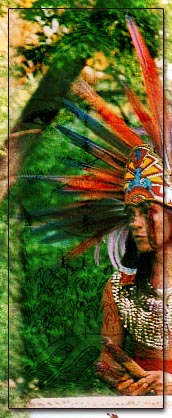


| site search by freefind |



|
|
| click photos above to view other international experiences |
Nanao Sakaki
Poems of Land & Life:
A Tour of Aboriginal Australian Urban and
Outback Communities
1981
by John Stokes
(Published in Nanao or Never: Nanao Sakaki Walks Earth A, edited by
Gary Lawless, Blackberry Books,617 East Neck Road, Nobleboro, Maine 04555,
2000. ISBN: 0-942396-85-5)
From 1978-1981, I worked to coordinate a 6 week tour of urban and outback Aboriginal Australian communities for Nanao and Gary Snyder. I was working at a college for adult Aboriginals in Adelaide, South Australia — the Aboriginal Community College — now called Tauondi, Inc. Seeing a tremendous lack of awareness of Aboriginal people, I had written a letter of invitation to Gary in 1978, asking if he would ever like to come over and meet the people. My friends and I thought that Gary could spread a positive message about Aboriginal culture to the world. The conventional Aboriginal wisdom was : Help will come from outside.
Gary thought it was a good idea, saying he would like to bring another poet when he came. The tour took a long time to put together, but eventually it was supported by the National Literature Board of Australia, as well as several state Arts Boards and the Aboriginal Arts Board. We decided the call the tour Poems of Land and Life.
In 1980, Gary wrote to say that he would like his friend, Nanao, to accompany him. I returned to the United States in 1981 meet Nanao and Gary and return for the tour. Some friends and I drove from the East coast to Albuquerque and then to Taos, where we picked up Nanao. From there, Nanao, my friends and I traveled on through Navajo country & Hopi land, across Death Valley and into the Sierra Nevadas to Kitkitdizze. I sprinted ahead to Australia to set things up in Sydney, where Gary and Nanao joined me two weeks later.
Our trip took us in a huge circle: from readings in Sydney to Brisbane for a writers’ festival; to Terania Creek in New South Wales where we met John Seed and others who were working to save the rainforests; to Stradbroke Island to spend a remarkable day with Aboriginal poet Kath Walker; to Adelaide in South Australia where we gave readings and visited the Aboriginal Community College; into Pitjantjara country in the Far North of South Australia to visit some of the outstations south of Uluru; to Uluru, the sacred red rock in the center; to Alice Springs to visit the Central Land Council, give a reading with Pintubi songmen from Papunya and visit the Tangentyere Land Council which works with Aboriginal people living in the creek beds around Alice; to Papunya for meetings with the songmen and readings for the community; taking the old men by truck deeper into Pintubi country, into their homeland; to Canberra for readings/meetings with poets at Australia National University; more readings in Sydney and a special benefit performance with Aboriginal bands No Fixed Address and Us Mob at the premier of their movie “Wrong Side of the Road”;and finally a trip to Tasmania to visit Gary’s friend Les Blakeborough, give readings in Hobart and watch the fairy penguins come ashore.
Some memories of Nanao:
In Sydney, looking out at the city over the roofs of Bondi Beach, Nanao asks: “Why are all these people here?”
In Alice Springs, Gary and Nanao took a day off for rest and paperwork. My friend Noreen Strangways took me on a hunt at a nearby station and we were lucky to get one perenti, a large desert lizard. We cooked it in the ground and brought it out, whole and blackened. When we got back to Toddy’s Cabins, the two were lying in bed reading when I brought this cooked 5 1/2 foot lizard into the room. Nanao jumped down from the top bunk and squatted beside the perenti. When he tasted some of the meat from the tail, he said,” Um Good! Dinosaur... but no soy sauce!”
Nanao, the great traveler, the great walker. Watching him discover new animals, birds, plants in the central desert. During our walk around Uluru, we had entered a small cool cave on the side. Nanao stroked the walls of the cave, polished smooth by generations and generations of Aboriginal hands. “Wow” he kept saying for days, “Wow,” looking at his hands. Later that night, he began to work on “A Chant of a Rock.”
One night, sitting in the dirt under the stars in Pintubi country, the old song men clacking boomerangs and singing the song of the songline we had traveled that day, eating kangaroo. The next day we drove back to Alice, flew to Canberra and that evening attended a stuffy literary party . “Too confusion,” he kept saying, shaking his head as we drove home. “So miserable.” The next morning, Nanao burst into my room and showed me a new poem he had written that morning. “Break the Mirror.”
At Papunya, Nanao, using a broom as a jo staff, chased around the little Pintubi kids who had gathered outside the community meeting place, with Samurai yells he made them scream with delight. For the elders, he chanted ancient Ainu songs, bringing the voice of the Bear people to the central desert.
In Tasmania, Nanao mentioned to the newspaper people that he was interested in seeing the Tasmanian tiger. “Are you looking for the tiger, Nanao?” they asked him. “No, “he said, “ I think the tiger is looking for me!”
A few days later, we lay on our stomachs for hours looking down onto a beach in the twilight watching hundreds of fairy penguins come ashore to roost for the night. “Little Captain Cook.”
************
At the end of the tour, Gary and Nanao returned to the United States and I went back to the College for another three years before returning home. Gary put together a tremendous article on our travels which he called “Good, Wild and Sacred.” Nanao put many of his Australian poems together in the collection “Break the Mirror.” Together, these writings have continued to work around the world, giving people an idea of the true beauty of the Aboriginal Australian ways.
The Aboriginal people have been caring for land and life since the dawn of time. They are like the voice of Uluru in “A Chant of a Rock”:
Chant of a Rock
by NanaoSo long, so long ——
Forty thousand years
I wait for you.At last
After forty thousand years
You come back to me.These days
They call me a giant monolith of Tierra del Australia.
No, I’m neither rock nor cave.Look at my skin, touch my skin!
Why is it so shiny?
Ah, black diamond!
Brighter than the Milky Way.
Why is it so polished, so refined?Me ——
Tended, caressed, loved
By your fingers
By your eyes
By your heart
By your songs
Forty thousand years.Look at my skin, touch my skin!
Shiny —— warm——tough.
Full of light
Full of strength
full of love.Touch me tenderly with your fingers
As your gran’pa did yesterday.Kiss me softly with your lips
As your gran’ma did last year.Sleep by me in peace
As you did forty thousaqnd years ago.Australia——a wonderful dreamland forever.
Now they call me treasure of commonwealth of Australia.Ladies and gentlemen,
Welcome to the dreamland!
Welcome to the magical rock!Please enter air-conditioned Australia
Please enjoy air-conditioned Australia.But, ladies and gentlemen,
Don’t forget what happened here in the dreamtime.Remember Wounded Knee in Australia
Remember Auschwitz in Australia
Remember Hiroshima in Australia
Remember a shiny rock in the dreamland!So long, so long ———
Forty thousand years
I wait for you.Started in Central Australia OCTOBER 1981
Finished at Zuni Village, North America DECEMBER 1981
| back to top |
Email: thetrackingproject@earthlink.net